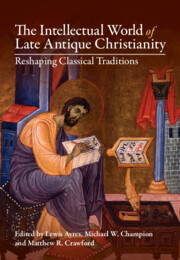394 results
The selective serotonin reuptake inhibitor sertraline alters learning from aversive reinforcements in patients with depression: evidence from a randomized controlled trial
-
- Journal:
- Psychological Medicine , First View
- Published online by Cambridge University Press:
- 17 April 2024, pp. 1-13
-
- Article
-
- You have access
- Open access
- HTML
- Export citation
Empowering the Participant Voice (EPV): Design and implementation of collaborative infrastructure to collect research participant experience feedback at scale
-
- Journal:
- Journal of Clinical and Translational Science / Volume 8 / Issue 1 / 2024
- Published online by Cambridge University Press:
- 06 February 2024, e40
-
- Article
-
- You have access
- Open access
- HTML
- Export citation
Promoting equity, inclusion, and efficiency: A team science approach to the development of authorship guidelines for a multi-disciplinary research team
-
- Journal:
- Journal of Clinical and Translational Science / Volume 7 / Issue 1 / 2023
- Published online by Cambridge University Press:
- 30 November 2023, e265
-
- Article
-
- You have access
- Open access
- HTML
- Export citation
1 - Modes of Knowing and Ordering Knowledge in Early Christianity
-
-
- Book:
- The Intellectual World of Late Antique Christianity
- Published online:
- 05 October 2023
- Print publication:
- 26 October 2023, pp 1-20
-
- Chapter
-
- You have access
- HTML
- Export citation
Preface
-
- Book:
- The Intellectual World of Late Antique Christianity
- Published online:
- 05 October 2023
- Print publication:
- 26 October 2023, pp xv-xvi
-
- Chapter
- Export citation
Notes on Contributors
-
- Book:
- The Intellectual World of Late Antique Christianity
- Published online:
- 05 October 2023
- Print publication:
- 26 October 2023, pp x-xiv
-
- Chapter
- Export citation
Contents
-
- Book:
- The Intellectual World of Late Antique Christianity
- Published online:
- 05 October 2023
- Print publication:
- 26 October 2023, pp v-viii
-
- Chapter
- Export citation
Plates
-
- Book:
- The Intellectual World of Late Antique Christianity
- Published online:
- 05 October 2023
- Print publication:
- 26 October 2023, pp ix-ix
-
- Chapter
- Export citation
Copyright page
-
- Book:
- The Intellectual World of Late Antique Christianity
- Published online:
- 05 October 2023
- Print publication:
- 26 October 2023, pp iv-iv
-
- Chapter
- Export citation
Bibliography
-
- Book:
- The Intellectual World of Late Antique Christianity
- Published online:
- 05 October 2023
- Print publication:
- 26 October 2023, pp 758-852
-
- Chapter
- Export citation
Index Locorum
-
- Book:
- The Intellectual World of Late Antique Christianity
- Published online:
- 05 October 2023
- Print publication:
- 26 October 2023, pp 853-883
-
- Chapter
- Export citation
General Index
-
- Book:
- The Intellectual World of Late Antique Christianity
- Published online:
- 05 October 2023
- Print publication:
- 26 October 2023, pp 884-912
-
- Chapter
- Export citation
Abbreviations
-
- Book:
- The Intellectual World of Late Antique Christianity
- Published online:
- 05 October 2023
- Print publication:
- 26 October 2023, pp xvii-xxii
-
- Chapter
- Export citation
Plate Section (PDF Only)
-
- Book:
- The Intellectual World of Late Antique Christianity
- Published online:
- 05 October 2023
- Print publication:
- 26 October 2023, pp 913-913
-
- Chapter
- Export citation

The Intellectual World of Late Antique Christianity
- Reshaping Classical Traditions
-
- Published online:
- 05 October 2023
- Print publication:
- 26 October 2023
Clinical factors associated with relapse in depression in a sample of UK primary care patients who have been on long-term antidepressant treatment
-
- Journal:
- Psychological Medicine / Volume 54 / Issue 5 / April 2024
- Published online by Cambridge University Press:
- 27 September 2023, pp. 951-961
-
- Article
-
- You have access
- Open access
- HTML
- Export citation
6 - When design meets power: design thinking, public sector innovation and the politics of policy-making
-
-
- Book:
- Policy-Making as Designing
- Published by:
- Bristol University Press
- Published online:
- 20 January 2024
- Print publication:
- 24 May 2023, pp 125-150
-
- Chapter
- Export citation
Three-dimensional food printing: its readiness for a food and nutrition insecure world
-
- Journal:
- Proceedings of the Nutrition Society / Volume 82 / Issue 4 / December 2023
- Published online by Cambridge University Press:
- 15 May 2023, pp. 468-477
-
- Article
-
- You have access
- Open access
- HTML
- Export citation
Cerebrospinal fluid neurofilament light predicts longitudinal diagnostic change in patients with psychiatric and neurodegenerative disorders
-
- Journal:
- Acta Neuropsychiatrica / Volume 36 / Issue 1 / February 2024
- Published online by Cambridge University Press:
- 28 April 2023, pp. 17-28
-
- Article
-
- You have access
- Open access
- HTML
- Export citation
Using clinical decision support to improve urine testing and antibiotic utilization
-
- Journal:
- Infection Control & Hospital Epidemiology / Volume 44 / Issue 10 / October 2023
- Published online by Cambridge University Press:
- 29 March 2023, pp. 1582-1586
- Print publication:
- October 2023
-
- Article
-
- You have access
- Open access
- HTML
- Export citation



